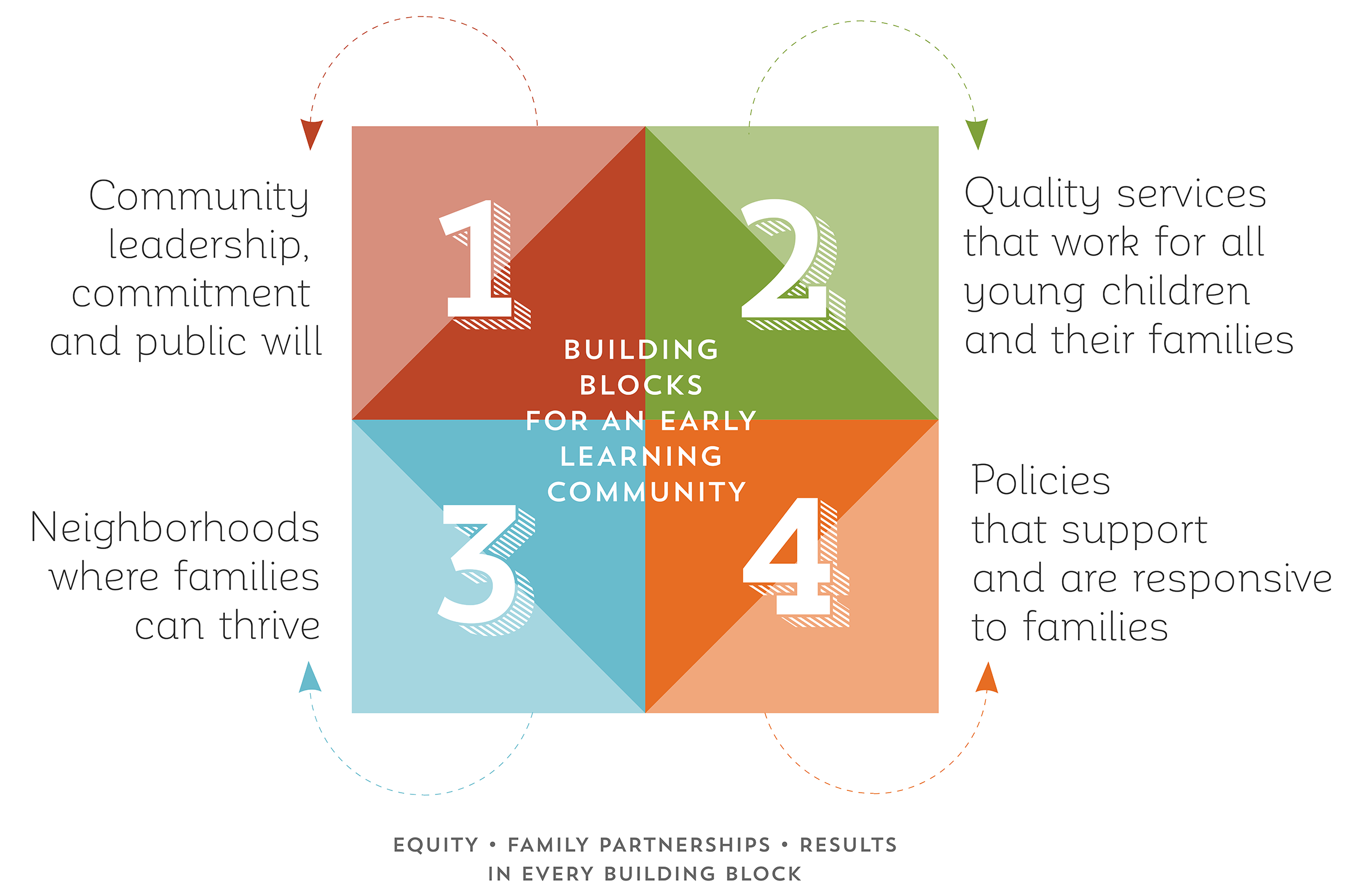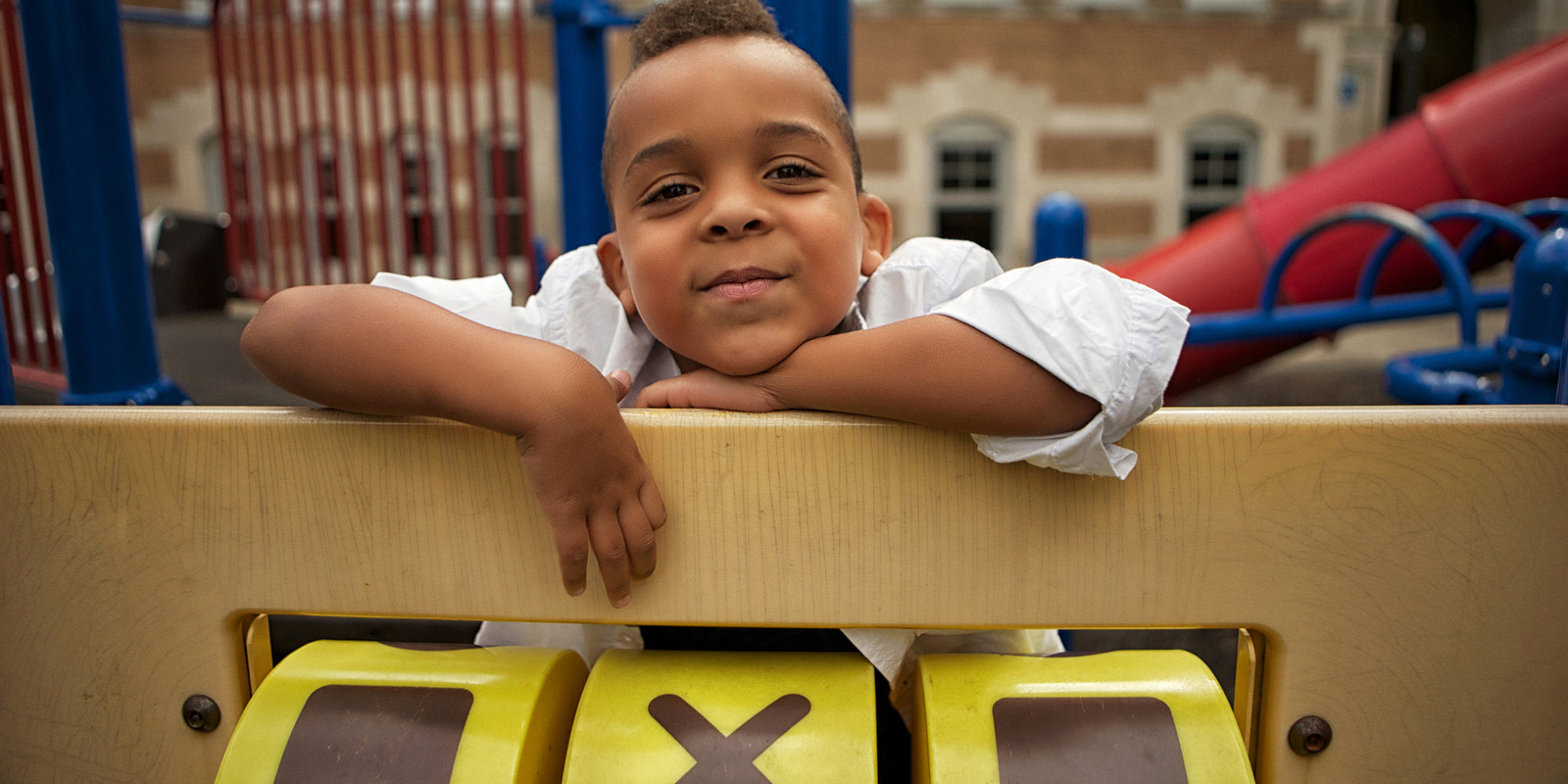Did you know that children’s earliest experiences—with their families and caregivers, and in their neighborhoods—establish the foundation for their health, learning and future success? In turn, parents’ and caregivers’ abilities to provide the best possible experiences for young children are influenced by the communities in which they live.
Want to dive in, create an action plan and begin to assess your community’s current level of progress in creating an Early Learning Community? The Digital Progress Rating Tool is available right here on Early Learning Nation, making it even easier to create your Action Plan and track your progress in becoming an Early Learning Community.
The Early Learning Community Action Guide and Progress Rating Tool are also available available to download here.
The influence of “place” on child and family well-being is becoming more and more clear. Earlier this year, ZERO to THREE and Child Trends collaborated to create the State of Babies Yearbook: 2019, a first-of-its-kind resource that provides a state-by-state snapshot of how babies and their families are doing. One of the most powerful revelations from the report is that the state where a baby is born makes an outsized difference in the child’s chance for a strong start in life. (Read more about the report on Early Learning Nation.) Other research, such as Raj Chetty’s recent analysis of long-term outcomes of the Moving to Opportunity study, demonstrate how a community and neighborhood in childhood can affect people for a lifetime.
This is why the Center for the Study of Social Policy (CSSP), in partnership with the National League of Cities (NLC) and the Bezos Family Foundation, are supporting cities and counties across the country to become Early Learning Communities.
What is an Early Learning Community? It’s a place where babies are welcomed into families that have all the opportunities and support they need to nurture and promote their children’s early learning and healthy development.
Many communities around the country are actively engaged in achieving this vision. I’m lucky to get to work with leaders and champions from 14 such communities through CSSP’s Early Childhood Learning and Innovation Network for Communities (EC-LINC). We’ve worked with leaders from these communities to learn about their challenges, successes and what they see as critical to successfully becoming an Early Learning Community. Over the past three years, we’ve worked with EC-LINC communities, our partners at NLC and the city leaders they convene, and other national experts, to develop the Early Learning Community Action Guide and Progress Rating Tool.
4 Building Blocks for an Early Learning Community
The Action Guide and Progress Rating Tool are built around four key building blocks—community characteristics and actions that promote healthy child development and family well-being—that form the foundation of an Early Learning Community. These four building blocks were gleaned from lessons learned in EC-LINC communities and years of deep research on what young children and their families need:
- COMMITMENT: Community leadership, commitment and public will to make early childhood a priority
- SERVICES: Quality services that work for all young children and their families
- NEIGHBORHOODS: Neighborhoods where families can thrive
- POLICY: Policies that support and are responsive to families

For each of these building blocks, we’ve established a set of 3-6 “targets”: descriptive statements about what an ideal community would look like – and described three levels communities may have achieved in working toward those targets.
For example, within building block 2 (services), target 2.4 is “Parents and families are actively engaged as partners.”
- A community just getting started might be at level 1 for this target: All child and family service providers receive training and support to help them approach parents as partners.
- A community further along in the work may have reached level 2: Parent leadership is integrated into every sector of the early childhood system.
- A community that has put in significant work in this area could be at a level 3: Parent leadership and resident engagement are the established norm throughout the community, including for government and government-funded activities.
Action steps describe specific ways a community might reach each of these levels.
Each community’s early childhood leaders, parents and other stakeholders can assess what level their community has reached for each of the targets in the Progress Rating Tool—soon to be released as an interactive, digital tool— then work together to identify priorities and develop an action plan to reach new levels in each of the building blocks.
Parent engagement and leadership was the focus of the target I used as an example above. In fact, family partnerships is one of three themes that run throughout the building blocks and the Early Learning Community Action Guide; the other two are equity and a focus on results.
Both CSSP and NLC are working on the ground with cohorts of cities and communities that have committed to becoming Early Learning Communities. We’re exploring opportunities to share the approach with other networks of communities at the state and national levels.
We view the work of becoming an Early Learning Community as an ongoing process, where there’s always room to improve current efforts, reach out to new partners and build more connections to strengthen communities. We couldn’t be more excited to get more and more communities engaged in becoming Early Learning Communities!
Fourteen exemplary communities with long histories of building effective early childhood systems are members of the Early Childhood Learning and Innovation Network for Communities Learning (EC-LINC). Their perspectives and experiences are invaluable to guiding the work and solving common challenges faced by communities together. Member communities and their leading organizations include:
- Alameda County, CA: First 5 Alameda County
- Boston, MA: United Way of Massachusetts Bay and Merrimack Valley
- Denver, CO: Denver’s Early Childhood Council
- Hartford, CT: The Office for Community Child Health at Connecticut Children’s Medical Center
- Guilford County, NC: Ready for School, Ready for Life
- Kent County, MI: First Steps
- Lamoille Valley, VT: Lamoille Family Center and Building Bright Futures
- Los Angeles, CA: First 5 LA
- Multnomah County, OR: Early Learning Multnomah
- Onondaga County, NY: Early Childhood Alliance
- Orange County, CA: Children and Families Commission of Orange County
- Palm Beach, FL: Children Services Council of Palm Beach County
- Volusia and Flagler Counties, FL: Thrive by Five
- Ventura, CA: First 5 Ventura County
Cailin O’Connor is a Senior Associate at the Center for the Study of Social Policy, where she works to promote better outcomes for young children and their families. Her focus promotes the protective factors that children, families and communities need to thrive. This includes supporting communities in their work to build innovative early childhood systems through the Early Childhood Learning and Innovation Network for Communities (EC-LINC), and coordinating the Strengthening Families National Network of 35 states using CSSP’s Strengthening Families Protective Factors Framework.



